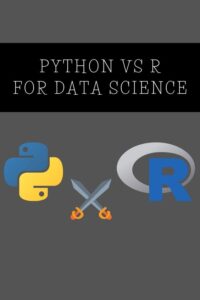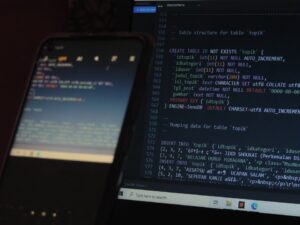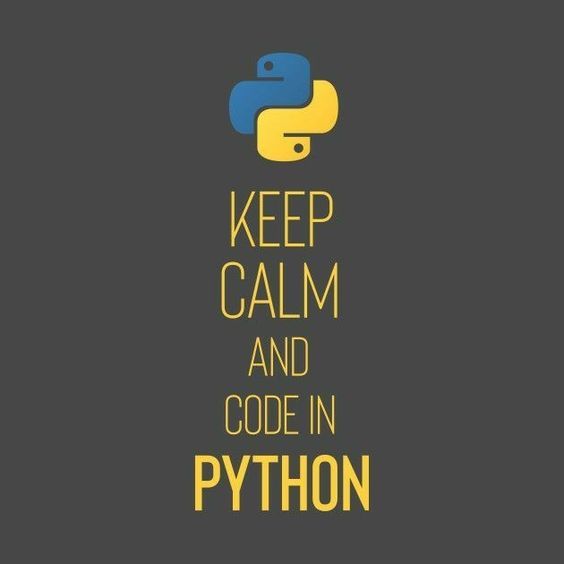What are the best programming languages for a data analyst to use?
The best programming language for data analysts can vary depending on the specific needs and goals of the analyst and the project they are working on. Some of the most commonly used programming languages for data analysis include Python, R, and SQL.
Python is a popular programming language that is widely used in the field of data science. One of the reasons for its popularity is the availability of powerful libraries for data manipulation, analysis, and visualization. In this essay, we will discuss three such libraries: NumPy, Pandas, and Matplotlib.
NumPy is a library for scientific computing in Python. It provides powerful tools for working with arrays and matrices of numerical data, and offers a wide range of mathematical functions and operations that can be applied to these data structures. One of the main uses of NumPy is to perform linear algebra operations, such as matrix multiplication, decomposition, and inversion. It is also used for statistical analysis, signal processing, and other scientific computing tasks.
Pandas is another popular library for data manipulation and analysis in Python. It is built on top of NumPy and provides a high-level interface for working with tabular data. Pandas allows you to easily manipulate and transform data, perform complex operations, and create useful summaries and aggregations. It is commonly used for data cleaning, preparation, and analysis, and is an essential tool for many data science tasks.
Matplotlib is a library for creating static, animated, and interactive visualizations in Python. It provides a wide range of plotting and charting tools, as well as a comprehensive set of customization options. Matplotlib is often used in conjunction with Pandas to create high-quality visualizations of data, and is an important tool for exploratory data analysis and data storytelling.
NumPy, Pandas, and Matplotlib are three powerful libraries that are commonly used in the field of data science with Python. These libraries provide a wide range of tools and functions for data manipulation, analysis, and visualization, and are essential for many data science tasks.

R is a popular programming language for data science and statistical analysis. It offers a wide range of tools and libraries for working with data, performing statistical analysis, and creating visualizations. In this essay, we will discuss some of the most commonly used libraries and functions in R for data science, and provide examples of their use cases.
One of the core libraries in R for data science is the tidyverse, which is a collection of packages for data manipulation, analysis, and visualization. The tidyverse includes packages such as dplyr for data manipulation, ggplot2 for data visualization, and tidyr for data cleaning and preparation. These packages provide a high-level, intuitive interface for working with data, and are widely used by R users for data science tasks.
Another important library in R for data science is the caret package, which provides a wide range of tools for machine learning and predictive modeling. The caret package allows users to easily train, evaluate, and compare different models, and includes functions for preprocessing, feature selection, and model tuning. It is commonly used for tasks such as classification, regression, and clustering.
The broom package is another useful library in R for data science. It provides functions for tidying up the results of statistical analyses, such as linear regression, ANOVA, and chi-squared tests. The broom package allows users to easily extract important summary statistics and coefficients from these analyses, and to convert them into a tidy format that is easy to work with and visualize.
R is a powerful language for data science, and offers a wide range of libraries and functions for working with data, performing statistical analysis, and creating visualizations. The tidyverse, caret, and broom packages are some of the most commonly used libraries in R for data science, and provide a wide range of tools and functions for data manipulation, analysis, and visualization.

SQL is a programming language for working with and querying databases. It is widely used in the field of data analysis, and offers a powerful and flexible way to access and manipulate data stored in relational databases. In this essay, we will discuss some of the most commonly used libraries and functions in SQL for data analysis, and provide examples of their use cases.
One of the core concepts in SQL for data analysis is the SELECT statement, which is used to retrieve data from a database table. The SELECT statement allows you to specify the columns of data that you want to retrieve, as well as conditions for filtering and sorting the data. For example, the following SELECT statement retrieves all rows from the “Employees” table where the “City” column is “New York”:
SELECT * FROM Employees WHERE City = 'New York';
Another important concept in SQL for data analysis is the JOIN operation, which allows you to combine data from multiple tables. There are several different types of JOINs, including INNER JOIN, LEFT JOIN, and RIGHT JOIN. These operations allow you to combine data from different tables based on matching values in common columns, and are commonly used for tasks such as joining tables on a foreign key.
In addition to the core SQL language, there are also several libraries and extensions that are commonly used for data analysis. One such library is the SQLite3 library, which provides an implementation of SQL that can be used to query and manipulate data stored in SQLite databases. SQLite is a lightweight and portable database engine, and is commonly used for small-scale data analysis tasks.
Another popular library for data analysis in SQL is the dplyr package, which provides a set of functions for working with data frames in R. The dplyr package allows you to easily manipulate and transform data, perform complex operations, and create useful summaries and aggregations. It is commonly used in conjunction with SQL to perform data analysis tasks, and offers a high-level, intuitive interface for working with data.
SQL is a powerful and widely used language for data analysis. It offers a rich set of tools and functions for working with and querying databases, and allows you to easily access and manipulate data stored in relational databases. The SELECT statement, JOIN operation, and libraries such as SQLite3 and dplyr are some of the most commonly used features of SQL for data analysis, and provide a wide range of tools and functions for working with data.
Ultimately, the best programming language for a data analyst will depend on their specific skills, experience, and the requirements of the project they are working on. Some analysts may be proficient in multiple languages and be able to choose the best language for each project, while others may specialize in one language and use it for all of their data analysis tasks.
Click HERE to learn more about the benefits and advantages of hiring an Independent Data Analyst.
To see examples of the SQL and Python code I use for data analysis, visit my GITHUB PAGE where you can see how I used in my PORTFOLIO PROJECT.

